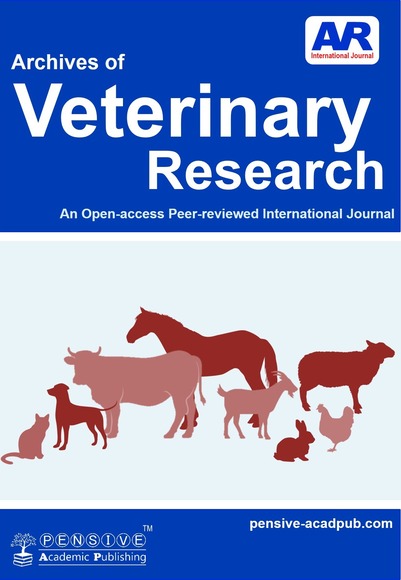Comparative evaluation of cytotoxicity of endodontic irrigants in a Wistar albino rat model
Endodontic irrigants in a Wistar albino rat model
DOI:
https://doi.org/10.70964/avr.8Keywords:
Root canal irrigants, Cytotoxicity, Grape seed extract, Animal model, Vitis viniferaAbstract
Natural products have been used in medicines and are promising sources of novel therapeutic agents. Extensive research worldwide on grape extracts, such as skin and seeds, has exhibited bioactive polyphenolic compounds such as anthocyanins, flavonols and resveratrol. These bioactive compounds demonstrate various biological biological activities such as antioxidant, antimicrobial, anti-carcinogenic and anti-inflammatory. This study evaluated the cytotoxicity of endodontic irrigants in a Wistar albino rat model. Among the tested substances, 10% of grape seed extract proved more biocompatible than EDTA on the seventh day. After 14 days, a significant reduction in the inflammatory process was verified in all experimental groups compared to the control. Still, it was significantly reduced in the Grape Seed Extract group (Group III). The inflammatory reaction observed during the 7 days may be attributed to the superficial necrosis promoted by EDTA.
References
1. Torabinejad M, Cho Y, Khademi AA, et al. The effect of various concentrations of sodium hypochlorite on the ability of MTAD to remove the smear layer. J Endod 2003; 29:233-9. https://doi.org/10.1097/00004770-200304000-00001
2. Scelza MFZ, Antoniazzi JH, Scelza P. Efficacy of final irrigation-A scanning electron microscopic evaluation. J Endod 2000; 26:355-8. https://doi.org/10.1097/00004770-200006000-00011
3. Khedmat S, Shokouhinejad N. Comparison of the efficacy of three chelating agents insmear layer removal. J Endod 2008; 34:599-602. https://doi.org/10.1016/j.joen.2008.02.023
4. Lin Sun Z, Wataha JC, Hanks CT. Effects of metal ions on osteoblast-like cell metabolismand differentiation. J Biomed Mater Res 1997; 34:29-37. https://doi.org/10.1002/(SICI)1097-4636(199701)34:1<29::AID-JBM5>3.0.CO;2-P
5. Valey JW, Simonian PT, Conrad EU. Carcinogenicity and metallic implants. Am J Orthod 1995; 24:319-24.
6. Langeland K, Guttusa J, Langeland L, et al. Methods in the study of biologic responsesto endodontic materials. Oral Surg Oral Med Oral Pathol 1969; 27:522-42. https://doi.org/10.1016/0030-4220(69)90078-4
7. Leonardo MR, Silva LAB, Almeida WA, et al. Tissue response to an epoxy-resin-basedroot canal sealer. Endod Dent Traumatol 1999; 15:28-32. https://doi.org/10.1111/j.1600-9657.1999.tb00745.x
8. International Organization for Standardization ISO 10993-5, biological evaluation of medical devices. Part 5. Tests for cytotoxicity: In vitro methods. Geneva, Switzerland: SO; 1999.
9. Scelza MFZ, Daniel RLDP, Santos EM, et al. Cytotoxic effects of 10% citric acidand EDTA-T used as root canal irrigants: an in vitro Analysis. J Endod 2001; 7:741-3. https://doi.org/10.1097/00004770-200112000-00007
10. Malheiros CF, Marques MM, Gavini G. In vitro evaluation of the cytotoxic effects ofacid solutions used as canal irrigants. J Endod 2005;31:746-8. https://doi.org/10.1097/01.don.0000157994.49432.67
11. Schmitz JP, Hollinger JO. The critical size defect as an experimental model for cranio mandibulo facial non unions. Clin Orthop 1986;205:229-308. https://doi.org/10.1097/00003086-198604000-00036
12. CemilYesilsoy, Eugene, Whitaker, Deborah Cleveland, Eric Phillips, Martin Trope. Antimicrobial and Toxic Effects of Established and Potential Root Canal Irrigants. Journal of Endodontics, 21; 10-14, 1995. https://doi.org/10.1016/S0099-2399(06)80524-8
13. Tinaz AC, Alacam T, Uzun O, et al. The effect of disruption of apical constriction onperiapical extrusion. J Endod 2005; 31:533-5. https://doi.org/10.1097/01.don.0000152294.35507.35
Downloads
Published
How to Cite
Issue
Section
License
Copyright (c) 2024 © 2024 Pensive Academic Publishing. All rights reserved. | Archives of Veterinary Research

This work is licensed under a Creative Commons Attribution 4.0 International License.




